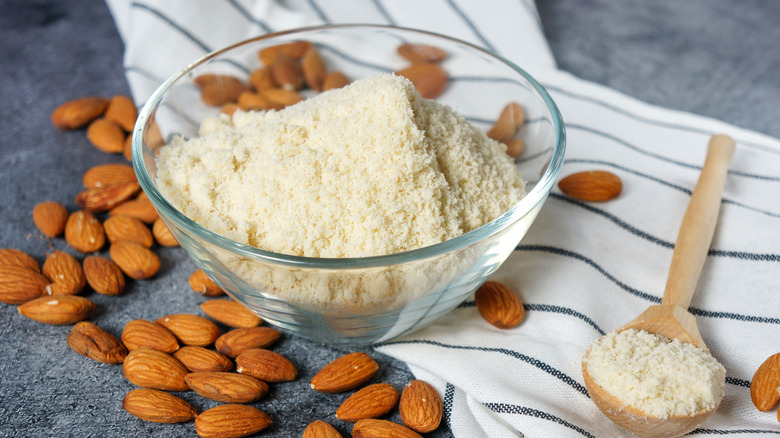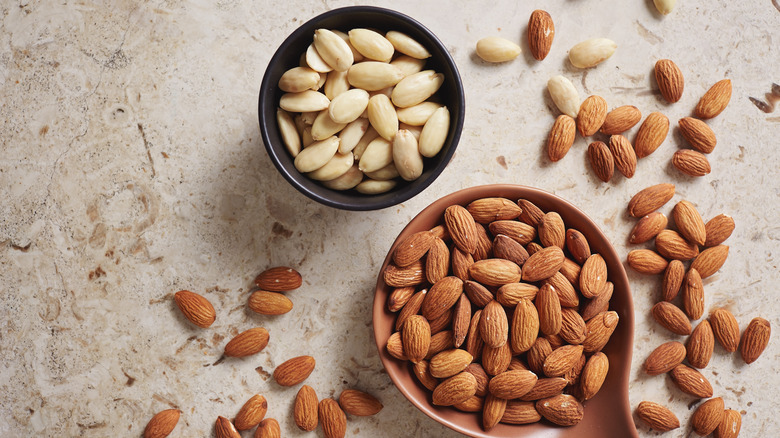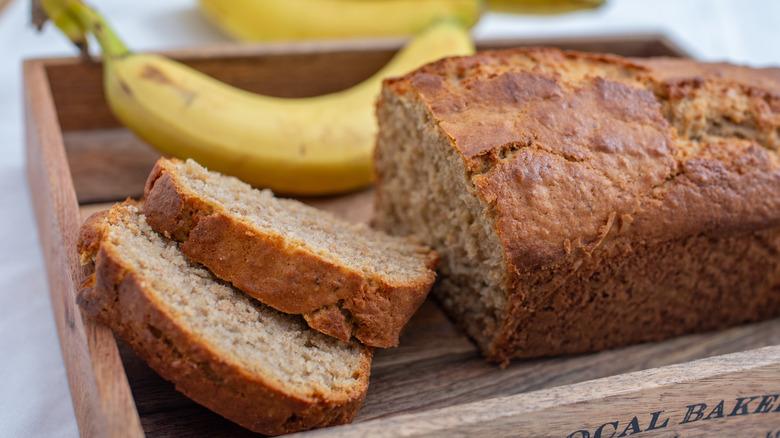The Difference Between Almond Meal And Almond Flour
Baking is pretty straightforward — a bag of flour, sugar, some eggs, a fat, a little leavener, and you're on your way to cookies, cakes, and muffins. All of these standard ingredients in baked goods work together when combined and heated to consistently deliver a delectable science experiment.
As baking and diets have evolved, the options for those who can't consume the standard ingredients has expanded. Gluten-free, low-carb, keto — there's a quick bread for everyone these days.
While there's never quite an equal tit-for-tat for taste and texture when you deviate from the typical aforementioned baking ingredients, some substitutes offer up unique flavor twists, nutritional benefits, and levels of complexity otherwise unachievable with a bag of typical flour. Flour made from the mighty almond being one of them.
But if you've ever paused in the baking aisle not knowing whether to reach for the almond meal or almond flour for your paleo banana bread endeavor, there are some key differences between the two options that result in typically slight — though sometimes significant — final products.
How they're made differs
Other than what's on your dinner plate, the word "meal" also means "A coarse, unsifted powder ground from the edible seeds of any grain," as well as "Any ground or powdery substance, as of nuts or seeds, resembling this" (per dictionary.com).
Suffice it to say, almond meal is just ground up almonds. Melissa Goodwin, of Frugal and Thriving, offers an easy set of instructions to make almond meal that calls for just a handful of almonds and a few passes through a food processor or high-speed blender.
There is no soaking or skinning involved for almond meal. The result is a coarsely ground (dare we say mealy, even) powder with specks of the skin woven throughout and a strong almond flavor undertone.
You can think of almond flour as taking almond meal two steps further. As a nut and not a grain, almonds used for almond flour are first blanched (peeled) and often ground more finely than the coarser almond meal, according to Bob's Red Mill.
Differences in nutrition and texture
Although there are differences in how the two are produced, the terms are typically used synonymously in recipes and even on packaging. However, there are some subtle ways that having that added skin and coarser consistency can affect what you are making, as well as its nutritional value.
The most noticeable difference is in the culinary application. Almond flour can be used for any recipe you'd use flour, but it is the better choice of the two for recipes that require a finer, smoother texture, like pastries and most baked goods. For that gluten-free banana bread you wanted to try, you could opt for either, but the loaf may slightly benefit from the denser, heartier mouthfeel of almond meal. Almond meal is also a good option for breading and other savory dishes you'd prefer a coarser texture with. Also of note is the addition of skin adds a slight nuttiness over the blanched flour, although subtle (via Blue Diamond).
From a nutritional standpoint, the skin found in almond meal adds a touch more bang for the buck, albeit minor. Almonds with the skin on edge out blanched almonds in fiber by over 2.5 grams per cup, according to a comparison done by California Almonds. The skin also adds a modest amount more of minerals like magnesium, zinc, iron, calcium, potassium, and manganese, as well as vitamin E.


